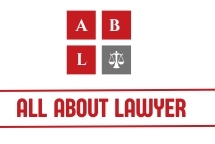Business Identity Theft, How Big Is the Threat and What Can Be Done?
Business identity theft has ballooned into a $56.6 billion menace that undermines operational continuity and regulatory compliance.
This comprehensive guide breaks down the scale of business identity theft, the underlying causes, and actionable defense strategies you can implement now.
Table of Contents
Business Identity Theft — A $56.6 Billion Threat
While personal identity theft causes hardship, business identity theft can cripple entire operations. Threat actors impersonate executives, file fraudulent paperwork, or open unauthorized accounts in a company’s name.
A. Human Error: The Entry Point for 90% of Breaches
Most corporate breaches start with employees falling for social engineering or phishing scams.
Actionable Strategies:
- Bi-monthly phishing simulations using AI-generated templates
- Micro-trainings for employees who fail tests
- SSN collection only post-hire to reduce early exposure
- Clean desk policies and screen privacy shields
Related article: Employment Identity Theft, How Often It Happens and What to Do If You’re a Victim

B. Fortifying Cyber & Physical Infrastructure
Technological Safeguards:
- End-to-end email encryption for sensitive communications
- Role-based access control for finance and HR systems
- Firewalls and real-time intrusion detection
- VPN mandates for remote access
Physical Protections:
- Cross-cut shredding of documents containing sensitive data
- Hard drive destruction via magnetic wiping—never just file deletion
Part III: Monitoring Systems That Catch Fraud Early
For Individuals (Employment ID Theft):
- IRS Transcript Service: Annual checks can reveal mismatched filings
- Social Security Statements: Look for unexplained work history
For Businesses:
| Monitoring Target | Tool/Frequency | Key Red Flags |
| Business Credit | Dun & Bradstreet, Experian (Quarterly) | Unauthorized loans or new accounts |
| EIN Activity | IRS Transcript (Annually) | Mismatched tax documents |
| Dark Web Exposure | AI-driven scans (Continuous) | Leaked employee credentials |
| Secretary of State Filings | State Portal (Monthly) | Unapproved address/director changes |
| Bank Accounts | Transaction alerts >$1,000 | Suspicious financial movements |
Part IV: Legal and Administrative Shields
A. For Employment ID Theft Victims
- IRS Form 14039 (Identity Theft Affidavit): Crucial for correcting records
- Credit freezes and fraud alerts: To protect linked financial profiles
B. For Businesses
- IRS Form 8822-B: Must be filed with every change in business address or responsible party
- State E-Notifications: Opt into these to catch unauthorized filings fast
- Timely Annual Filings: Prevent “inactive” status, a common tactic used in corporate hijackings
C. Insurance & Regulatory Compliance
- Cyber liability insurance: Must include business identity theft recovery and legal dispute coverage
- Adopt NIST Cybersecurity Framework (CSF): Especially the Small Business version for regulatory readiness
Part V: Vendor & Third-Party Risk — The Supply Chain Threat
A significant number of breaches originate from compromised vendors:
- 40% of business identity thefts trace back to third-party breaches
- Conduct vendor security audits quarterly
- Require SOC 2 compliance reports from key partners
- Use contractual clauses mandating immediate notification of any data breach
Conclusion: A Multi-Layered Approach Is No Longer Optional
Both employment and business identity theft are evolving faster than ever. In 2025, the criminals are more sophisticated, data is more accessible, and both individuals and corporations face more severe consequences than just financial loss. For businesses, the risks include lost reputation, compliance violations, and operational shutdowns. For individuals, it’s years of tax issues, ruined credit, and possible criminal accusations.
Proactive education, system monitoring, layered security, and regulatory vigilance are the cornerstones of staying protected. Whether you’re managing a small business or simply filing taxes as a worker, defending your identity must now be part of your daily routine.
Sources:
- IRS – Identity Theft Central
- Federal Trade Commission – Consumer Sentinel Network Data Book 2025
- Javelin Strategy & Research – 2025 Identity Fraud Study
- NIST Small Business Cybersecurity Corner
- Cybersecurity & Infrastructure Security Agency (CISA)
About the Author

Sarah Klein, JD, is a former consumer rights attorney who spent years helping clients with issues like unfair billing, product disputes, and debt collection practices. At All About Lawyer, she simplifies consumer protection laws so readers can defend their rights and resolve problems with confidence.
Read more about Sarah
